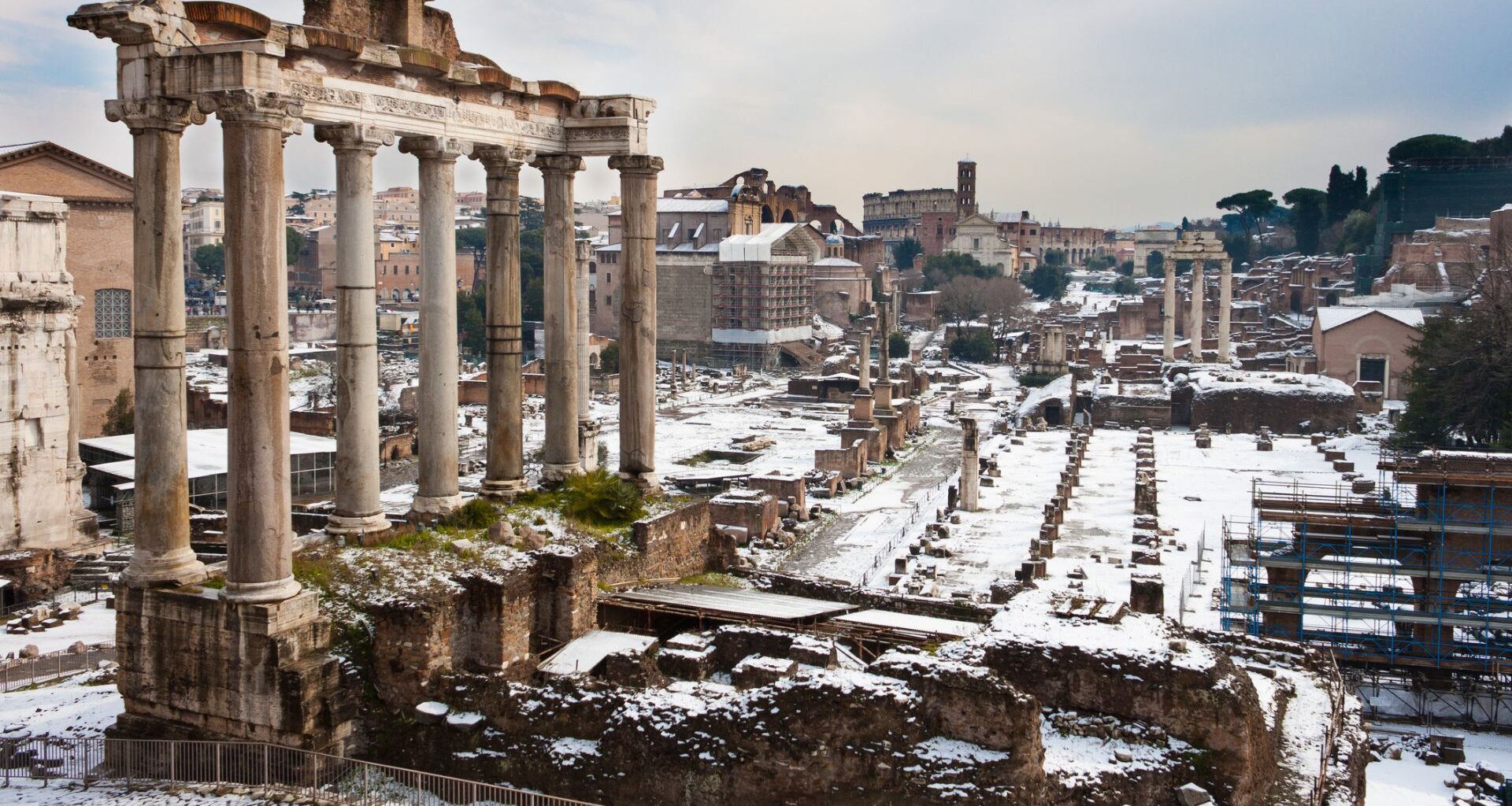A new study from Queen’s University found geological evidence in Iceland pointing to a climate crisis as a key factor in the Roman Empire’s ultimate demise.
In the sixth century AD, three massive volcanic eruptions triggered a climate crisis known as the Late Antique Little Ice Age (LALIA). Ash blocked out sunlight for 200-300 years, causing a drop in global temperatures that exacerbated the problems that the faltering Roman Empire already faced.
Researchers from Queen’s University analyzed unusual rocks from Greenland that had drifted to the west coast of Iceland as a result of the sudden climate shift.
They confirmed the timeframe for the LALIA event, which matched historical records and even expressed its undeniable magnitude, so climate change might have played a far more significant role in the decline of the Roman Empire than previously assumed.
It got cold when Rome needed good weather
Off the west coast of Iceland, the presence of white rocks in an otherwise black basalt environment gripped researchers’ interest. Setting off to explore the beach on foot, they gathered and subsequently crushed and analyzed the zircon crystals to trace their origins back to sixth-century Greenland. They had traveled at least 117 miles to get to these shores, as Live Science reported.
Lead author of the new study published in Geology, Christopher Spencer, explained that “ice-rafting” led to their migration. “Icebergs, laden with debris from glaciers, are carried across the oceans by currents.”
“What we’re seeing is a powerful example of how interconnected the climate system is. When glaciers grow, icebergs calve, ocean currents shift, and landscapes change,” co-author of the research, Tom Gernon, Earth Sciences specialist at the University of Southampton, told Arkeonews.
The rocks had been timestamped, leading researchers to draw connections between LALIA and this geological shift it triggered. It might have been even worse than scientists thought it was. The global cooling, which happened to coincide with the Justinian Plague, was felt around the world.
Live Science mentioned the account of a Byzantine historian who reported “a sunless sky” as a “portent of great terror” around the year 536. The drop in temperatures might appear slight, 1.8 to 3.6°F, but it caused widespread famine and illness: crop failures, increased livestock mortality, and a sharp rise in food prices,” as per The Jerusalem Post.
The Roman Empire didn’t need another problem.
Should we be taking notes?
Historians have always been aware of LALIA, but to what extent had it shaken the empire? Economic decline, internal religious conflict, and constant warfare under Justinian, aimed at restoring the Empire to its former glory, had already weakened it. And then, the Plague killed 30-50 million people.
The rocks in Iceland indicated the severe impact that LALIA had, not only in Rome, as the global climate event even coincided with the fall of China’s Northern Wei dynasty, as per Live Science.
For being one of the most significant empires in history, the Roman Empire’s impending collapse remains controversial. Numerous factors contributed to its breaking apart and eventual fall.
Researchers from Queen’s University suggest the “Little Ice Age” delivered a blow when the state of the Roman Empire was at a critical point. A stunning array of external and internal challenges destabilized the once “ruler of the Western world,” preventing its capacity to recover.
Read the study published in Geology.
